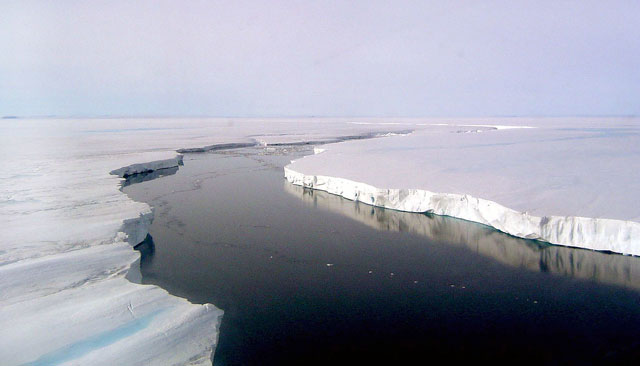Off the shelfResearchers combine data to understand more fully how Antarctica's ice is changingPosted August 5, 2011
An international team of researchers has combined data from multiple sources to provide the clearest account yet of how much glacial ice surges into the sea following the collapse of Antarctic ice shelves. The work, published online in July in the Journal of Glaciology, details recent ice losses while promising to sharpen future predictions of further ice loss and sea level rise likely to result from ongoing changes along the Antarctic Peninsula, one of the fastest warming regions on the planet. “Not only do you get an initial loss of glacial ice when adjacent ice shelves collapse, but you get continued ice losses for many years — even decades — to come,” said Christopher Shuman “This further demonstrates how important ice shelves are to Antarctic glaciers,” added Shuman, lead author of the paper. An ice shelf is a thick, floating tongue of ice, fed by a tributary glacier, extending into the sea off a land mass. Previous research has shown that the recent collapse of several ice shelves in Antarctica led to acceleration of the glaciers that feed into them. Combining satellite data from NASA and the French space agency CNES “The approach we took drew on the strengths of each data source to produce the most complete picture yet of how these glaciers are changing,” said Etienne Berthier, a co-author on the paper from the University of Toulouse, in the press release. Berthier noted that the study relied on easy access to remote sensing information provided by NASA and CNES. The team used data from NASA sources including the Moderate Imaging Spectroradiometer (MODIS) The analysis reveals rapid elevation decreases of more than 150 meters for some glaciers. The authors’ analysis shows ice loss in the study area of at least 11.2 gigatons per year from 2001 to 2006. Their ongoing work shows ice loss from 2006 to 2010 was almost as large, averaging 10.2 gigatons per year. “This study shows where the tracking of sea level rise is heading in terms of the level of detail possible and the instrumentation that can be brought to bear,” said Ted Scambos “We’re showing that glacier changes can start fast, with a single climate or ocean ‘bang,’ but they have a long persistence,” Scambos said. |



For USAP Participants |
For The Public |
For Researchers and EducatorsContact UsNational Science FoundationOffice of Polar Programs Geosciences Directorate 2415 Eisenhower Avenue, Suite W7100 Alexandria, VA 22314 Sign up for the NSF Office of Polar Programs newsletter and events. Feedback Form |



